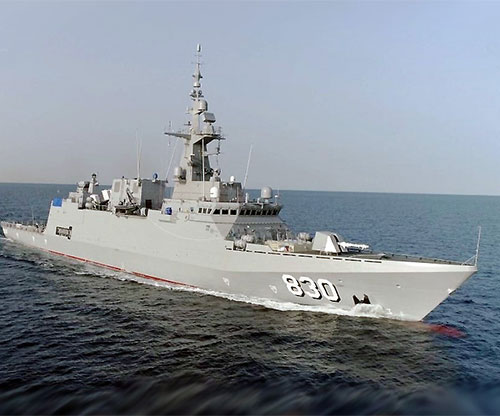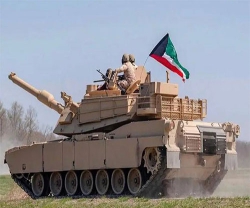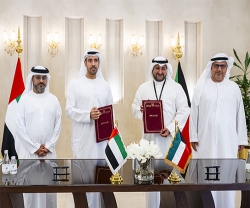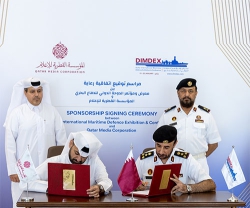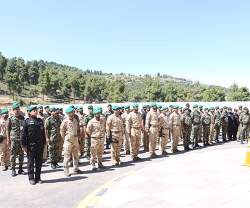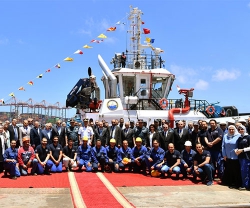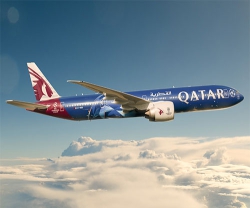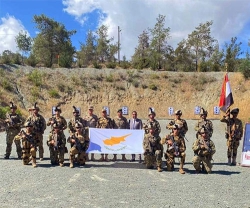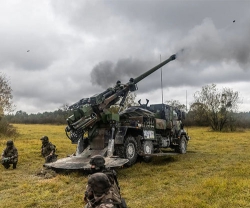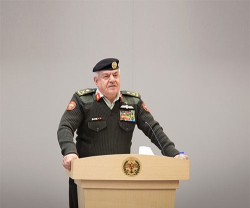The Kingdom of Saudi Arabia announced a significant increase in its defense budget, anticipated to progressively increase to reach $86.4bn in 2028, according to GlobalData’s ‘Saudi Arabia Defense Market 2023-2028’ report.
With the nation’s economy on the mend following the Covid-19 pandemic and the recent surge in oil prices, it is expected that the country will gradually ramp up its defense spending, Airforce Technology reported.
The Kingdom of Saudi Arabia has been severely impacted by the instability in the worldwide oil industry, as well as the widespread disturbance to economic and commercial operations caused by the Covid-19 pandemic.
For the third consecutive year, the nation’s defense spending has decreased, with the 2021 budget reaching a total of $53.9bn, according to GlobalData.
However, the Kingdom’s ambition to develop its defense industrial capacity to source 50% of its defense requirements from domestic sources, coupled with the need for a robust defense posture in the face of external threats, are driving military spending for the nation.
According to GlobalData analysis, the three sectors that are the greatest beneficiaries of this investment are Military Fixed Wing, Missiles and Missile Defense Systems, and Naval Vessels and Surface Combatants. These sectors are projected to have a cumulative value of $15.8bn, $7.4bn, and $4.2bn, respectively, between 2023 and 2028.
In 2007, a contract was signed between Saudi Arabia and BAE Systems for the purchase of 72 Eurofighter Typhoon fighter jets by Saudi Arabia, and this contract was extended to include a further 48 aircraft last year for $16bn, following a 2018 Memorandum of Understanding. The controversial deal between the UK and Saudi Arabia has been the subject of allegations of corruption and bribery, although the program has been a crucial factor in maintaining the UK’s defense industry and strengthening its relationship with Saudi Arabia. In 2009, the initial batch of jets was delivered, with the final delivery taking place in 2017.
With a cumulative spending of $15.8bn, the military fixed-wing market in Saudi Arabia has emerged as the most attractive market in the country. The government has announced plans to invest $11.9bn in multi-role aircraft between the years 2023 and 2028.
Saudi Arabia has expressed continued interest in procuring another batch of Eurofighter Typhoons, with the British government amenable to facilitating such a transaction, should Saudi Arabia decide to proceed. The United Kingdom has expressed its willingness to provide complete support for a deal with Saudi Arabia, however, BAE Systems, the manufacturer involved in the deal, has not specified any particular timeline for the progression of a second tranche.
Moreover, Saudi Arabia is making swift strides in modernizing its military as part of its efforts to establish regional dominance. Saudi Arabia, traditionally known for its land power, is now placing greater emphasis on the development of its naval capabilities.
In this context, it is possible that the country may give priority to the development of its naval capabilities. Thus far, the navy has solely conducted operations in areas with shallow waters, commonly referred to as “brown water.” As part of their efforts to expand their power projection capabilities, they are steadily developing the ability to operate in blue water. In a move to enhance its naval prowess, the country has ordered four Multi-Mission Surface Combatants, versatile frigates capable of performing a variety of mission-types, that will go a long way in advancing Saudi Arabian naval capabilities.
According to GlobalData, $4.2bn is set to be spent on navy vessels and surface combatants by Saudi Arabia between the years 2023 and 2028, with $2bn allocated to Corvettes, alone. The vast majority of the reaming budget is divided between frigates ($1.6bn), and light combat boats, ($485m).
Meanwhile, missiles and missile defense systems is the second largest market in Saudi Arabia, with the country anticipated to cumulatively spend $7.4bn on the missiles and missile defense systems sector over the next five years, and nearly half of that, $3.6bn, in the market for anti-air missiles, making it the largest segment within the missiles and missile defense system market. Anti-ship missiles is the second largest, with Saudi Arabia anticipated to spend around $1.2bn over 2023-2028.

